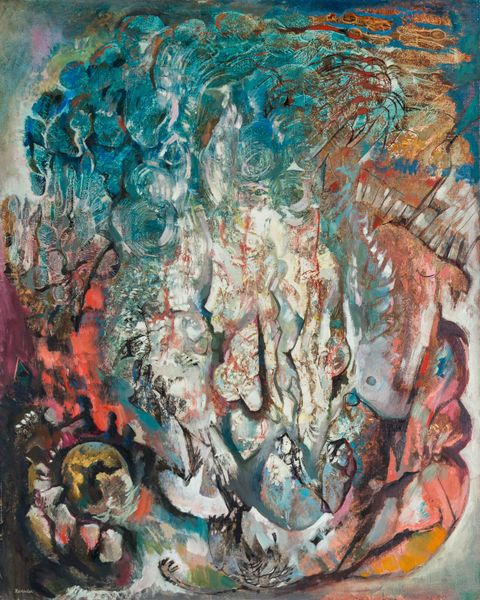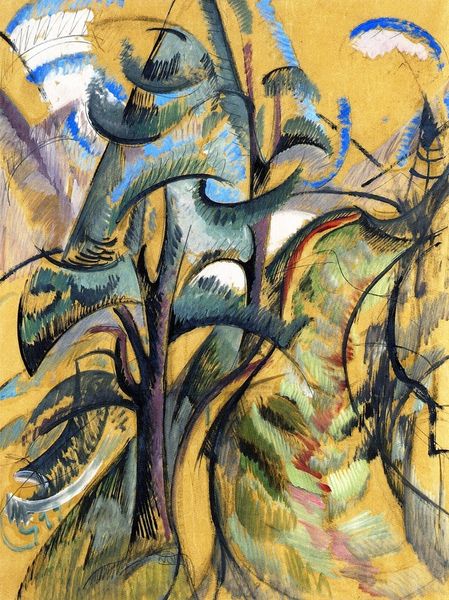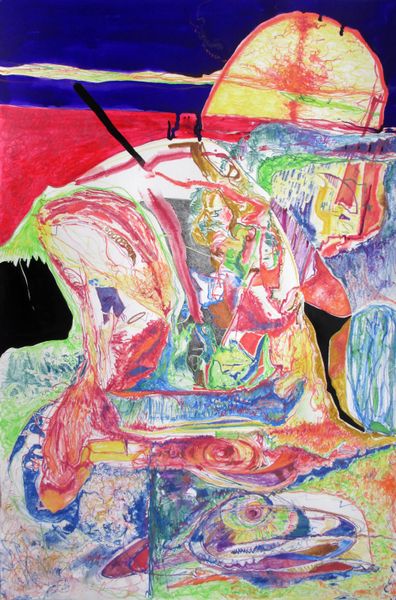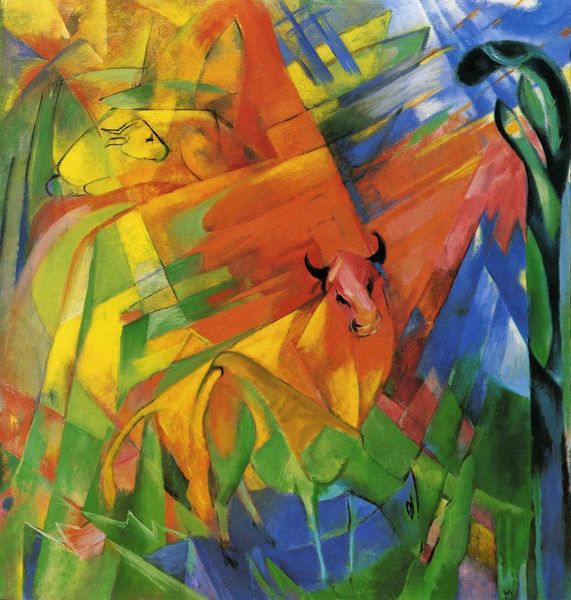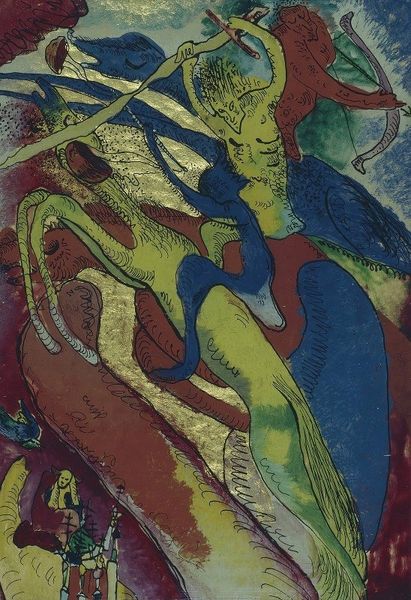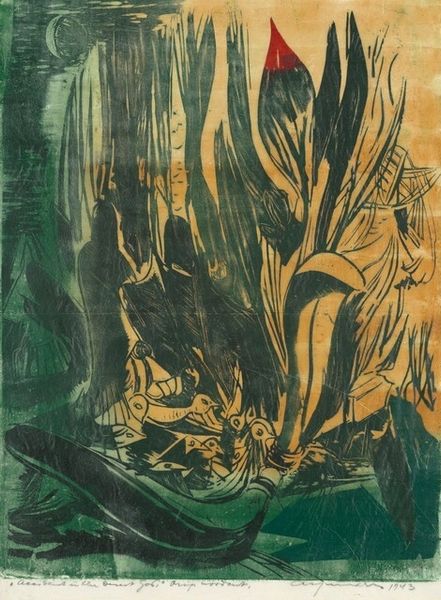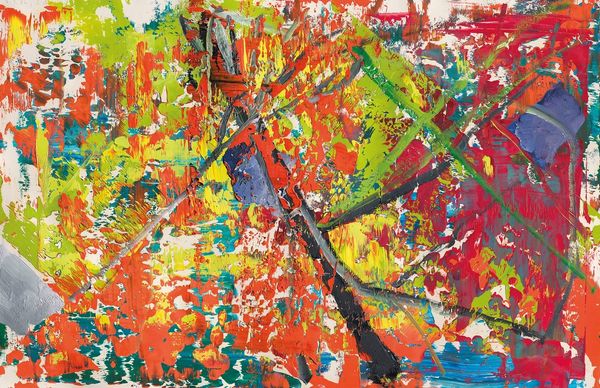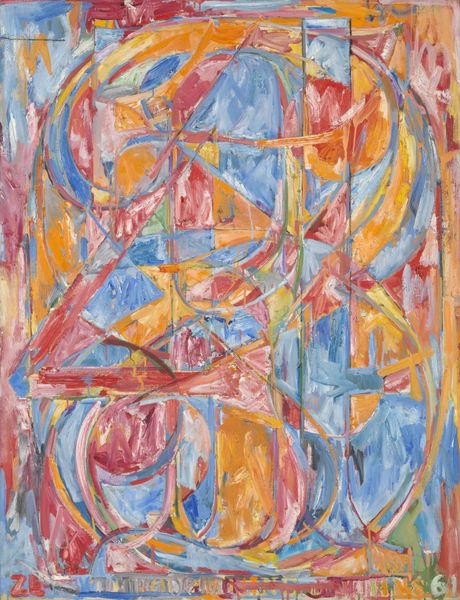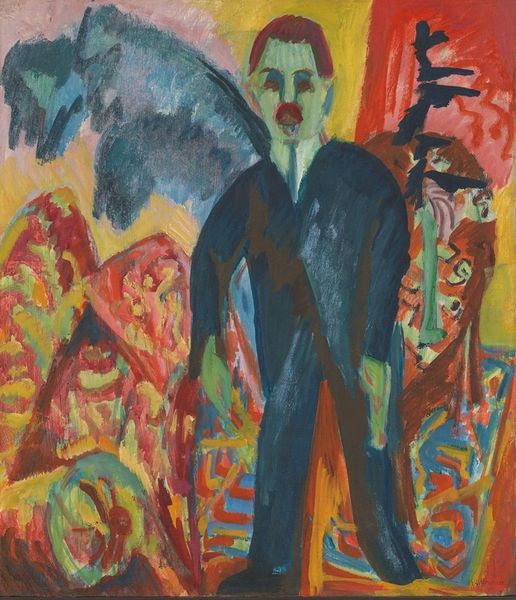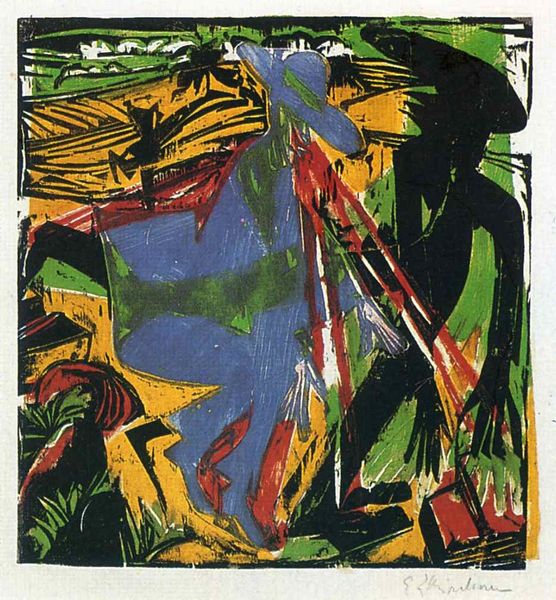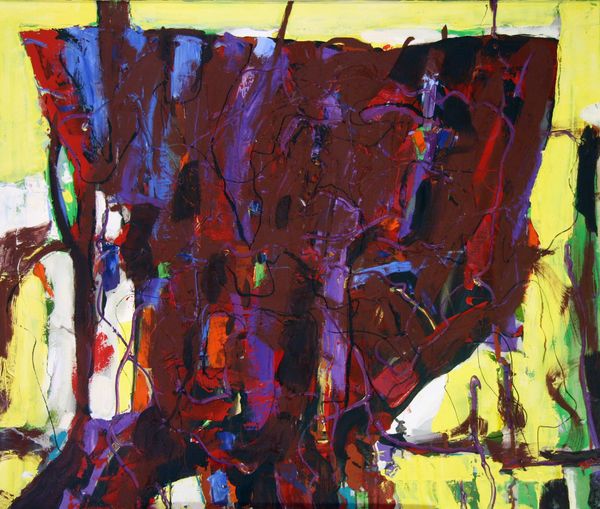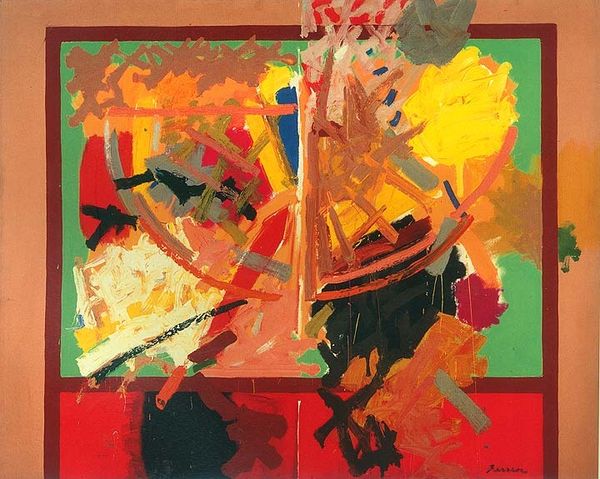
Dimensions: 46 x 37 cm
Copyright: Jacques Hérold,Fair Use
Curator: Here we have Jacques Hérold’s "Fragment de Liberté," painted in 1942 using acrylics. It’s a vibrant and somewhat chaotic piece. Editor: My initial impression is that it's both unsettling and intriguing. The colours are vivid, almost clashing, yet they create this strange, compelling energy. There's a sense of wildness, of something primal straining to break free. Curator: Hérold created this work during the height of World War II. Considering this historical context, "Fragment de Liberté" becomes a potent visual expression of resistance and the yearning for liberation amidst oppressive forces. Editor: I’m particularly drawn to the recurring visual motifs, especially the thorny, pointed shapes. They could be interpreted as symbols of resilience. Think of the crown of thorns, the spiky exterior protecting something vulnerable beneath. There’s an ambivalent quality—attraction and repulsion intertwined. Curator: Absolutely, and that ambivalence is critical. Given the wartime environment and Hérold’s Surrealist leanings, these shapes can symbolize the dangers of freedom. His aesthetic sought to break from established political structures and social norms that dominated Europe at that time. Editor: I find myself looking at that central, almost dragon-like figure, with its multiple eyes. It could be an ancient symbol, a guardian, or perhaps a warning—representing power, vigilance, or the monstrous aspects of oppression. It recalls similar imagery throughout various cultural mythologies. Curator: This work embodies how Surrealist artists of the period navigated censorship, creating ambiguous artworks open to multiple interpretations, allowing critique of totalitarian regimes without explicitly stating anti-government messages. This piece invites questions about agency and collective identity during a period of profound historical shifts. Editor: Reflecting on our discussion, it's clear "Fragment de Liberté" speaks across time. Curator: It's a visual document of cultural struggle and societal tension. A relevant perspective for today.
Comments
No comments
Be the first to comment and join the conversation on the ultimate creative platform.
